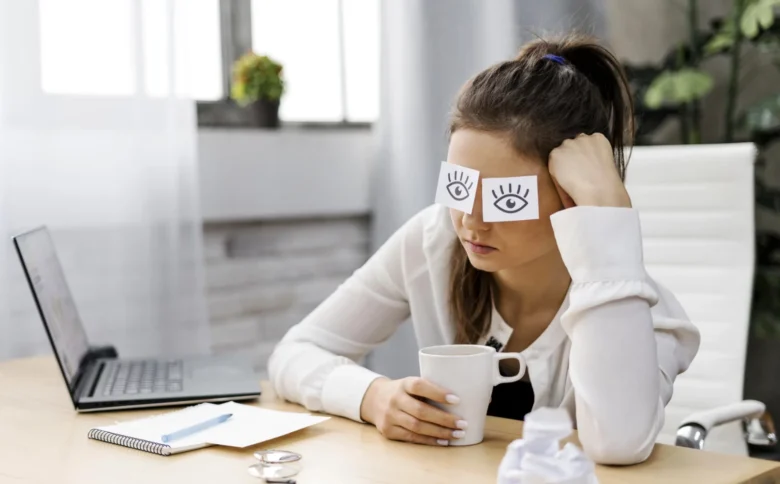Screens are essential tools in the workplace, but they can also impede productivity by distracting workers from focusing on tasks and leading to physical health problems such as eye strain, poor posture, and even lack of sleep. Implementing goals, tracking screen time, and employing practical strategies are effective ways to reduce tech use without hindering productivity. Begin by designing tech-free zones such as your bedroom or dinner table.
1. Set Limits
Setting limits can help limit screen time and prevent health problems like eyestrain, backache, and lack of focus. Regular “screen-free” times can help increase your quality of life. For instance, set aside one hour between dinner and bedtime to do something non-screen related, such as reading, playing board games, or talking with family. Apps can also help you monitor and limit your usage. Tools such as Digital Wellbeing for iPhone or SPACE for Android can assist in understanding habits and making beneficial changes.
2. Take a Break
Breaks from screens can help refresh and revitalize you, giving you more energy for work or recreation. Even small steps such as setting a timer when browsing social media or reading physical books during breaks add up when it comes to decreasing screen time. Every little step counts!
The goal of reduced screen time shouldn’t be to reach recommended screen time levels; rather, focus on creating sustainable habits of cutting back. Look for opportunities to switch out screen-time activities for others such as exercising, socializing over coffee with friends, or brainstorming in person; these activities offer similar benefits but are much more fun!
3. Put Your Phone Away
Keep your phone out of sight to help reduce the urge to check it, such as by placing it in another room or pocket when at home or creating screen-free zones such as your bedroom or dinner table.
Reduced screen time can also help create healthier habits. By replacing passive activities with more engaging offline ones, like exercise (which increases energy levels and builds relationships) or even new hobbies like painting or playing music, small changes will eventually add up into bigger changes over time.
4. Take a Walk
Many of us utilize screen time for work-related activities, but reducing screen time doesn’t have to be an all-or-nothing undertaking. Simply swapping out one activity for another—like writing brainstorm notes on paper rather than in a spreadsheet, or scheduling meetings in person instead of via video call—could result in significant savings of screen time.
Establishing tech-free dining areas and bedrooms will encourage meaningful conversation and enhance connection; keeping screens out can ensure better restful sleep. Making these small adjustments can create healthier habits and lessen eye strain.
5. Try a New Activity
By exploring new activities, it can help reduce screen time by replacing less-productive habits with healthier ones. To build healthy habits without going cold turkey. Also, this will prevent you from falling back into old patterns in the future.
Introducing new, screen-free activities into your work-life balance regimen can also help. Meditation or quick stretching could be great ways to start the day; phone calls instead of emails might work better, or writing notes in an actual journal rather than notepad apps can all add something extra special. Consider downloading Focus Report, which lets you monitor device usage and block specific apps during predetermined periods, as well as BePresent’s leaderboard that encourages screen reduction through competition.
6. Turn Off Notifications
When trying to concentrate, turning off notifications may help. This will stop distracting messages from apps and websites from interrupting your focus. Screen Time and Digital Wellbeing apps on iOS and Android make managing screen time simpler, while third-party apps may offer additional information and extra features you may prefer.
Create screen-free zones such as your dining table or bedroom to facilitate face-to-face communication and minimize distractions. Furthermore, turn off work-related notifications outside your office hours in order to enhance sleep quality and promote a healthy work-life balance.
7. Try a Blue Light Filter
One of the primary barriers to cutting down screen time is worrying that doing so will mean forgoing work productivity. Luckily, there are tools that can help boost work productivity while simultaneously decreasing screen time: these include time-tracking apps like RescueTime, Toggl, or HubStaff, as well as strategies such as the Pomodoro method.
There are apps designed to filter out blue light, which has been known to interfere with sleep patterns and cause eyestrain. Laptops and TVs should use these filters. You could also try wearing glasses equipped with blue light filters during the evening hours.
8. Turn Off the TV
Developing the habit of turning off your TV every now and then can help reduce screen time and increase non-screen activities such as reading, exercise, and hobbies. At meals or when spending time with family and friends, it is beneficial to refrain from watching television or playing video games so as to facilitate conversation and practice face-to-face social skills.
Take the steps necessary to create a more relaxing environment by eliminating electronics from bedrooms and spaces where you spend a majority of time, such as your living room. Doing this will encourage you to enjoy nature by forcing you out into nature itself!
9. Turn Off Your Computer
Staying glued to screens for extended periods can result in overstimulation of the brain, leading to eye strain, neck and back pain, poor posture, decreased focus, and insomnia. Furthermore, prolonged computer use may result in “Zoom Fatigue,” similar to text fatigue but caused by staring too long at your screen during video meetings.
Apps such as HT Family Shield can help you monitor and regulate screen time by restricting access to websites or applications you don’t want kids to access. Plus, you can set a daily usage schedule so the program logs off or shuts down automatically after its usage time has ended.




